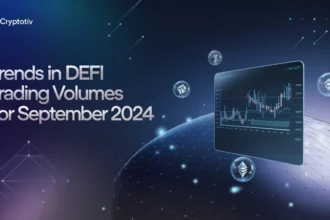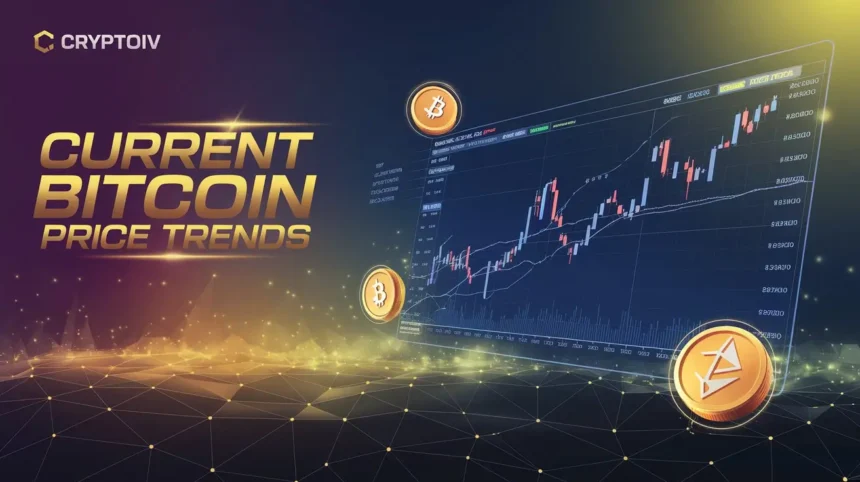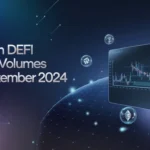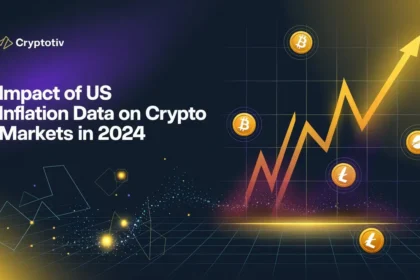In today’s fast-paced cryptocurrency market, Current Bitcoin Price Trends continue to attract attention from traders and investors alike. As of September 14, 2024, Bitcoin has shown price fluctuations typical of September’s historical volatility. Currently priced around $58,106, Bitcoin has experienced a steady rise from its lower resistance of $57,500, edging closer to the critical $60,000 mark. This rise in price comes amidst global macroeconomic factors such as Federal Reserve policies, increased institutional investments, and the ongoing market sentiment surrounding Bitcoin’s stability.
Keeping track of these daily Bitcoin price change reports and understanding how global news influences Bitcoin price is crucial for staying ahead in the market. In recent weeks, institutional buying, like MicroStrategy’s massive Bitcoin purchase, has further solidified Bitcoin’s market strength. At the same time, traders closely monitor price resistance and support levels to determine potential trading opportunities.
Recent Bitcoin Price Movements and Key Trends
Bitcoin’s price movements in 2024 have been characterized by significant fluctuations due to various market factors, including institutional investments, Federal Reserve policies, and broader economic trends. Monitoring real-time Bitcoin price fluctuations is crucial for traders and analysts to capitalize on the volatile nature of the cryptocurrency market. Over the past few months, Bitcoin has experienced periods of rapid price surges followed by stabilization, with key resistance and support levels shaping the trading strategies of investors.
Bitcoin’s Performance in 2024
In 2024, Bitcoin’s price volatility has been a dominant theme, shaped by notable events such as the April Bitcoin halving and the continued influence of Bitcoin ETFs. The April halving event, which reduced block rewards for miners, stabilized Bitcoin’s price around $64,000 for several months before a pullback in early September. The approval of additional Bitcoin ETFs, which provide institutional investors with easier access to the cryptocurrency, has acted as a key market catalyst, driving significant price increases throughout the year.
Traders and analysts have observed heightened Bitcoin price volatility in 2024, as macroeconomic factors such as inflation and Federal Reserve policy changes have played pivotal roles. For example, price fluctuations in recent weeks have been heavily influenced by discussions of potential interest rate cuts. Additionally, institutional interest, exemplified by large-scale purchases from companies like MicroStrategy, has helped support Bitcoin’s market performance and liquidity.
Bitcoin Resistance and Support Levels
As of mid-September 2024, Bitcoin has established key support at $57,500 and critical resistance near $60,000, marking essential benchmarks for traders. These levels serve as vital indicators for short-term trading strategies, with traders focusing on potential breakouts above $60,000, a crucial psychological barrier.
| Exchange | Support Level | Resistance Level |
|---|---|---|
| Binance | $57,500 | $60,000 |
| Coinbase | $57,600 | $59,900 |
| Kraken | $57,480 | $60,150 |
| Bitfinex | $57,510 | $60,200 |
The $60,000 resistance level has proven challenging to breach, as traders remain cautious of macroeconomic factors, including Federal Reserve policy updates and inflation concerns, which could push Bitcoin prices down before the year-end. This real-time analysis of Bitcoin price resistance and support levels allows traders to adjust their strategies accordingly.
Impact of Global Economic Factors on Bitcoin
Global economic trends have played a significant role in shaping Bitcoin’s market trajectory in 2024. Federal Reserve announcements regarding interest rate policies, inflation reports, and the overall economic outlook have been major drivers of price fluctuations. For instance, expectations of potential interest rate cuts have bolstered Bitcoin prices, as investors seek alternatives to traditional assets.
Inflation concerns, coupled with geopolitical events and global economic instability, have further added to the volatility of the cryptocurrency market. Institutional interest in Bitcoin, particularly from hedge funds and major financial institutions, has also created market catalysts, driving Bitcoin’s price movements. Traders and analysts closely monitor these macroeconomic indicators to anticipate short-term price movements and align their trading strategies.
Short-Term Bitcoin Price Outlook
The short-term price trend for Bitcoin in the remaining months of 2024 indicates the potential for continued volatility. Analysts predict that Bitcoin may experience further dips, possibly testing $40,000 before rebounding to challenge the $60,000 resistance level again. These fluctuations will likely be driven by global economic conditions, Federal Reserve policy decisions, and the ongoing regulatory landscape surrounding cryptocurrencies.
For traders, the weekly Bitcoin price fluctuation insights offer valuable data on potential buying and selling opportunities. Despite the potential for a short-term dip, market sentiment remains optimistic about a long-term rebound, especially as institutional interest grows and Bitcoin ETFs gain further traction.
Institutional Influence on Bitcoin Price Trends
The role of institutional investments and ETF approvals in Bitcoin’s price trends has been transformative throughout 2024. As institutional investors increasingly enter the market, their buying power and influence over market liquidity have introduced new dynamics to Bitcoin’s price movements. The approval of Bitcoin ETFs in particular has simplified access to Bitcoin for traditional investors, broadening the market and driving demand.
Institutional buying, combined with these ETF approvals, has helped stabilize Bitcoin during volatile periods, pushing the cryptocurrency closer to key resistance levels, such as the recent $60,000 mark. By closely following institutional activities, traders can better understand the forces driving Bitcoin’s price trends.
Institutional Investment and ETF Impact
Institutional investments have become one of the most significant catalysts for Bitcoin’s price increases in 2024. Large-scale purchases by companies like MicroStrategy and Tesla, as well as Bitcoin ETF approvals, have attracted more liquidity into the market. These institutional players have the capital and influence to impact Bitcoin price trends by market volume, often serving as a stabilizing force during periods of high volatility.
For example, MicroStrategy recently made a significant purchase of 18,300 BTC, driving market sentiment and contributing to Bitcoin’s climb toward the $60,000 mark. Similarly, Bitcoin ETFs have opened the doors for traditional investors who may have previously found cryptocurrency too complex or risky to engage with directly. By offering an accessible way to invest in Bitcoin, ETFs have driven more mainstream adoption and increased trading volumes.
Bitcoin Halving’s Role in Price Trends
The April 2024 Bitcoin halving was another critical event shaping Bitcoin’s price trends. This halving reduced the block rewards for miners from 6.25 BTC to 3.125 BTC, effectively lowering the rate at which new Bitcoins enter circulation. Historically, halvings have created supply shortages, which, combined with steady or increasing demand, have contributed to significant price increases.
Step-by-step Guide: Stages of Market Reaction Post-Halving
- Pre-Halving Accumulation: In the months leading up to the halving, Bitcoin prices typically rise as traders anticipate the supply reduction. In 2024, this pattern held true, with prices climbing from around $50,000 to over $64,000.
- Immediate Post-Halving Reaction: Following the halving, there was a brief period of consolidation as the market absorbed the effects of the reduced supply. Prices remained relatively stable around the $60,000 to $64,000 range.
- Medium-Term Adjustment: Bitcoin experienced increased volatility over the following months, partly driven by institutional demand and macroeconomic factors such as interest rate decisions.
- Long-Term Impact: Analysts expect the halving’s full effect to unfold over the next year, with prices potentially breaking above their previous all-time highs as supply tightens further.
Note
The halving event has historically been a long-term bullish signal, and many expect similar price gains in the coming months as the market adjusts to the reduced supply of newly minted Bitcoins.
Bitcoin Historical Data Up to Sep 13, 2024:
| Date | Price | Open | High | Low | Vol. | Change % |
| Sep 13, 2024 | 60,531.40 | 58,134.40 | 60,625.40 | 57,656.80 | 102.00K | 0.0412 |
| Sep 12, 2024 | 58,134.50 | 57,335.50 | 58,484.10 | 57,329.60 | 98.42K | 0.0139 |
| Sep 11, 2024 | 57,338.70 | 57,638.00 | 57,975.90 | 55,576.60 | 102.15K | -0.51% |
| Sep 10, 2024 | 57,635.00 | 57,045.60 | 58,019.90 | 56,415.30 | 77.65K | 0.0103 |
| Sep 09, 2024 | 57,049.60 | 54,868.00 | 57,956.70 | 54,595.40 | 105.33K | 0.0399 |
| Sep 08, 2024 | 54,861.30 | 54,161.40 | 55,292.70 | 53,642.40 | 51.99K | 0.013 |
| Sep 07, 2024 | 54,156.50 | 53,965.00 | 54,819.20 | 53,754.30 | 58.11K | 0.0035 |
| Sep 06, 2024 | 53,966.80 | 56,179.70 | 56,969.10 | 52,644.60 | 155.84K | -3.94% |
| Sep 05, 2024 | 56,183.20 | 57,970.70 | 58,318.90 | 55,744.60 | 90.36K | -3.09% |
| Sep 04, 2024 | 57,973.40 | 57,490.40 | 58,508.80 | 55,732.10 | 108.44K | 0.0086 |
| Sep 03, 2024 | 57,479.80 | 59,133.70 | 59,799.70 | 57,436.90 | 74.77K | -2.80% |
| Sep 02, 2024 | 59,134.00 | 57,309.00 | 59,416.60 | 57,185.80 | 73.18K | 0.0317 |
| Sep 01, 2024 | 57,315.70 | 58,975.70 | 59,058.70 | 57,232.40 | 63.95K | -2.82% |
| Aug 31, 2024 | 58,978.60 | 59,120.40 | 59,447.00 | 58,761.10 | 30.86K | -0.24% |
| Aug 30, 2024 | 59,119.70 | 59,371.70 | 59,817.60 | 57,874.70 | 87.31K | -0.43% |
| Aug 29, 2024 | 59,373.50 | 59,027.30 | 61,150.60 | 58,807.10 | 87.19K | 0.0061 |
| Aug 28, 2024 | 59,016.00 | 59,425.60 | 60,198.40 | 57,912.10 | 109.47K | -0.73% |
| Aug 27, 2024 | 59,450.90 | 62,832.20 | 63,201.40 | 58,187.30 | 108.53K | -5.40% |
| Aug 26, 2024 | 62,846.20 | 64,240.70 | 64,472.50 | 62,841.10 | 68.89K | -2.22% |
| Aug 25, 2024 | 64,273.20 | 64,160.70 | 64,939.20 | 63,796.60 | 41.61K | 0.0018 |
| Aug 24, 2024 | 64,159.30 | 64,061.70 | 64,458.90 | 63,579.50 | 54.14K | 0.0017 |
| Aug 23, 2024 | 64,053.10 | 60,374.70 | 64,830.10 | 60,354.40 | 125.50K | 0.061 |
| Aug 22, 2024 | 60,372.20 | 61,158.30 | 61,399.70 | 59,815.80 | 74.39K | -1.29% |
| Aug 21, 2024 | 61,158.10 | 59,010.00 | 61,812.00 | 58,831.10 | 91.31K | 0.0365 |
| Aug 20, 2024 | 59,005.80 | 59,470.30 | 61,331.60 | 58,612.00 | 69.77K | -0.78% |
| Aug 19, 2024 | 59,470.90 | 58,445.80 | 59,598.50 | 57,872.00 | 49.19K | 0.0175 |
| Aug 18, 2024 | 58,446.30 | 59,485.40 | 60,216.30 | 58,436.10 | 30.82K | -1.74% |
| Aug 17, 2024 | 59,483.10 | 58,877.80 | 59,659.50 | 58,825.50 | 18.51K | 0.0103 |
| Aug 16, 2024 | 58,877.20 | 57,545.10 | 59,817.30 | 57,129.10 | 64.01K | 0.0233 |
| Aug 15, 2024 | 57,534.60 | 58,710.10 | 59,831.40 | 56,275.70 | 81.47K | -2.00% |
| Aug 14, 2024 | 58,707.80 | 60,594.60 | 61,543.00 | 58,491.20 | 64.79K | -3.11% |
| Aug 13, 2024 | 60,595.20 | 59,350.20 | 61,537.00 | 58,492.40 | 62.92K | 0.021 |
| Highest: 64939.2 | Lowest: 52,644.6 | Difference: | 12,294.60 | Average: | 58,958.80 | Change %: 2.0 |
Key Catalysts Driving Bitcoin Price Movements
Bitcoin’s price is highly sensitive to a variety of market catalysts that can push its value higher or cause sudden downturns. Understanding these catalysts, such as global events, regulatory changes, and shifts in market sentiment, is crucial for traders and investors who want to make informed decisions. These factors often interact with one another, amplifying or mitigating their effects on Bitcoin’s market dynamics.
Global events, in particular, have become more intertwined with the cryptocurrency markets, as Bitcoin is now seen as both a hedge against traditional financial instability and a speculative asset. Additionally, regulatory updates and central bank policies like those from the Federal Reserve play an increasingly influential role in Bitcoin’s price movements. By staying updated on these key drivers, traders can better anticipate Bitcoin’s short- and long-term fluctuations.
Role of Global Events in Price Fluctuations
Global events such as economic downturns, geopolitical tensions, and financial announcements have a direct impact on Bitcoin’s price. These events often create uncertainty in traditional markets, leading investors to seek alternative assets like Bitcoin. For instance, during periods of inflation or recession fears, Bitcoin is sometimes viewed as a safe haven, similar to gold.
A prime example is how inflation reports and employment data in the U.S. have triggered fluctuations in Bitcoin’s price throughout 2024. As the global economy reacts to these reports, investors turn to Bitcoin either as a hedge against inflation or to capitalize on market movements driven by uncertainty. Additionally, political decisions such as interest rate hikes or tax policy changes can alter investor behavior, either driving prices higher through increased demand or pushing them lower due to tightening fiscal conditions.
Bitcoin’s price also reacts to major financial announcements, such as the recent discussions on Bitcoin ETFs or announcements from large corporations entering the crypto space. These moves provide liquidity and legitimacy, often boosting market sentiment and leading to price rallies.
Federal Reserve Policies and Bitcoin
The policies set by the U.S. Federal Reserve are among the most significant macroeconomic factors affecting Bitcoin’s price. The Fed’s decisions on interest rates and other monetary policies often trigger widespread changes across global markets, including cryptocurrency. For example, when the Federal Reserve hints at interest rate cuts, Bitcoin tends to rise as investors look for higher returns in non-traditional assets.
In 2024, several Federal Reserve announcements significantly influenced Bitcoin’s price. As inflation pressures persisted, the Fed’s decision to potentially lower interest rates was seen as a bullish signal for Bitcoin, driving up its price. On the other hand, concerns over regulatory scrutiny and tightening financial conditions can weigh heavily on Bitcoin, causing temporary price dips.
Key Federal Reserve Policies Influencing Bitcoin in 2024:
- Interest Rate Decisions: As the Federal Reserve considered lowering interest rates to stimulate the economy, Bitcoin saw a corresponding increase in value as investors looked for alternative assets that might offer higher returns.
- Quantitative Easing: Discussions about the Federal Reserve’s easing of monetary policy in the face of recession fears led to a short-term boost in Bitcoin prices, as more liquidity entered the market.
- Inflation Reports: Ongoing inflation concerns prompted the Fed to take a cautious approach, directly influencing Bitcoin’s appeal as a hedge against inflation.
- Regulatory Stance: While not a monetary policy, the Federal Reserve’s stance on cryptocurrency regulation also impacts market sentiment, especially as discussions about stablecoin regulations and CBDCs (Central Bank Digital Currencies) emerge.
Info
Understanding how these macroeconomic decisions drive Bitcoin price trends is vital for traders and investors looking to time their market entries and exits effectively.
Bitcoin Price Volatility and Daily Updates
Bitcoin is known for its daily price volatility, with significant fluctuations occurring due to various market factors. These rapid price changes make it a high-risk, high-reward asset, especially for short-term traders looking to capitalize on small price movements. Traders closely monitor Bitcoin’s price behavior on a day-to-day basis to identify patterns, capitalize on dips, or take profits during price surges. Understanding Bitcoin’s volatility is crucial for navigating the market effectively and making informed trading decisions.
Daily Bitcoin Price Fluctuations
Bitcoin’s daily price movements in 2024 have been characterized by frequent fluctuations, often tied to global news, institutional activities, and macroeconomic indicators. For example, recent inflation reports and updates from the Federal Reserve on interest rates have triggered sudden surges or dips in Bitcoin prices. On September 13, 2024, Bitcoin showed a 1.26% increase, closing at approximately $58,106, with a previous low of $57,381 the day before.
This constant shifting presents both opportunities and risks for traders who seek to capitalize on daily market movements. Events such as large institutional Bitcoin purchases, regulatory updates, and global financial developments have played a role in influencing these fluctuations. Traders often turn to real-time Bitcoin price updates to make quick decisions based on daily Bitcoin price change reports.
Weekly Bitcoin Price Recap
The weekly performance of Bitcoin provides a broader view of price trends, offering traders insight into potential patterns that may influence short-term trading strategies. Over the past week, Bitcoin has experienced both upward and downward movements, testing key support and resistance levels. For example, in the week leading up to September 13, 2024, Bitcoin fluctuated between $57,000 and $60,000, showing resilience at $57,500 support while facing resistance at $60,000.
The combination of institutional buying and macroeconomic news, particularly regarding inflation and interest rates, has contributed to these weekly fluctuations. These price movements are indicative of broader market trends, with analysts suggesting that Bitcoin could see further volatility in the coming weeks as more institutional activity and regulatory discussions unfold. Traders can use this weekly recap to gauge whether short-term dips or surges are part of a larger trend, helping them make more strategic trades.
For more insights and continuous updates, explore links below:
- Bitcoin Dominance in Crypto Markets
- Impact of US Inflation Data on Crypto
- Federal Reserve’s Crypto Regulatory Stance
- Analysis of Flash Crash in Crypto Markets
- Bitcoin Halving and Market Reactions
Wrapping Up
Bitcoin’s price trends throughout 2024 have been shaped by a variety of key market catalysts, including institutional investment, global economic events, and regulatory changes. From the influence of institutional buying and Bitcoin ETFs to the significant impact of Federal Reserve policies on Bitcoin’s price, traders and investors need to stay informed of these factors to navigate the volatile cryptocurrency market effectively.
Tracking daily and weekly price fluctuations, understanding the role of support and resistance levels, and monitoring broader market sentiment provide essential insights for short-term and long-term strategies. As Bitcoin continues to evolve in a rapidly changing financial landscape, staying updated on real-time market trends will be critical for success.















